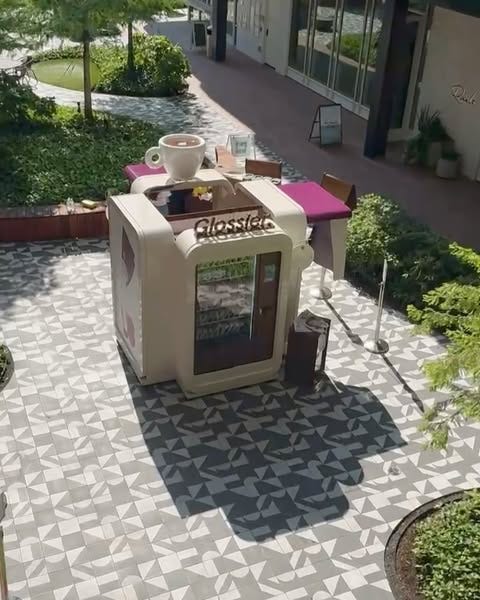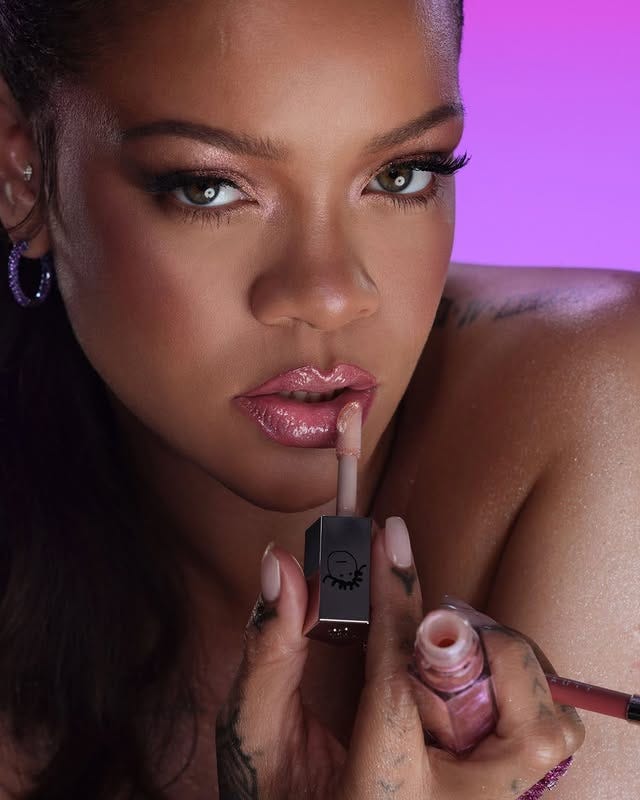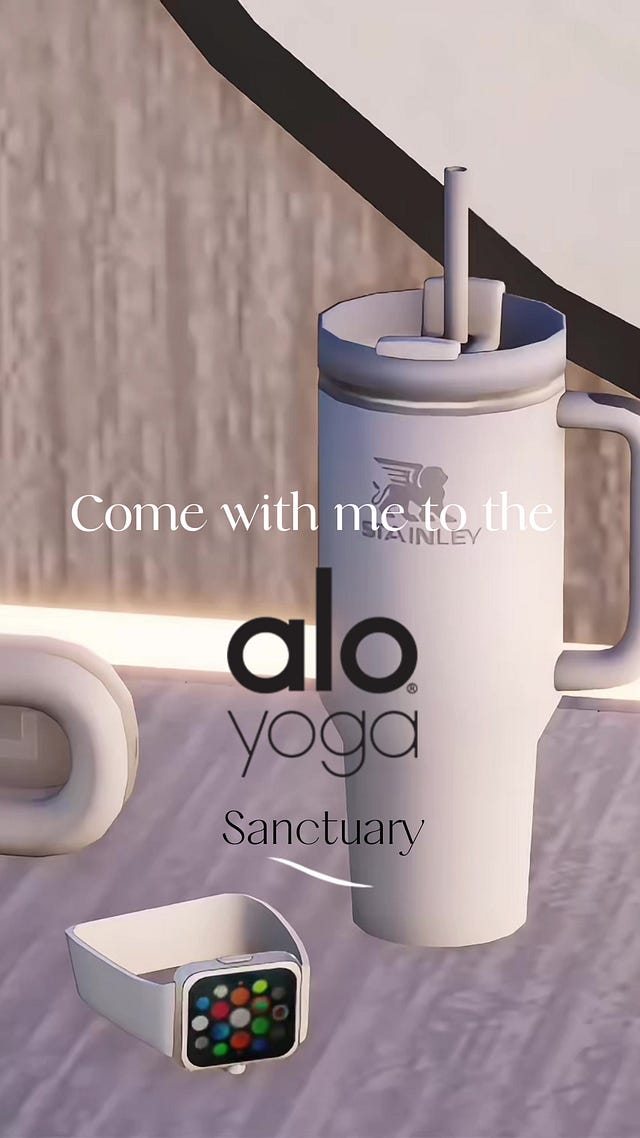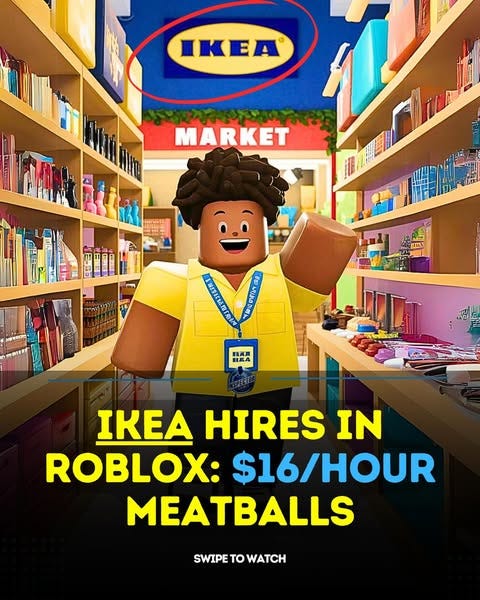Running late to the game?
While marketers glamorize the real world, brands are quietly building strong communities on Roblox.
Hi everyone, welcome back! In case you’re new here, I’m Olivia, a senior copywriter at Artemis Ward and your guide for this monthly column, where we dive into the deeper shifts behind viral moments and what they mean for us. Let’s take the plunge.
Three years ago, long before Brat Summer became a state of mind, you could go to a Charli XCX concert for free — no ticket, no travel, no “party girl bumpin’ that” outfit required.
Because the show was on Roblox.
Yes, that Roblox, the platform long dismissed as a digital playground for tweens. In 2022, Charli hosted a virtual concert there that was attended by millions. It was pixelated, and while maybe a little cringe, accessible to anyone with a device.
Fast forward to now, and Charli has become a full-blown cultural force, but only select fans have experienced her IRL. If you’re in the U.S., her Brat tour stopped in just a handful of cities and festivals — Brooklyn, Austin, Chicago, Minneapolis, and Coachella — making attendance for out-of-towners cost hundreds (if not thousands) once you add up tickets, travel, lodging, transportation, and (of course) Brat-coded outfits. This gap between the promise of access and the reality of exclusivity captures the tension defining today’s cultural moment — one that Roblox is well-positioned to solve.
Everywhere you look, physical presence is celebrated. The headlines echo the same refrain: young people are lonely, screen-fatigued, and desperate to connect. To find community, the answer is simple: join run clubs, attend coffee raves and concerts, or sign up for meditation-themed matchmaking events.
But many IRL experiences, branded or not, come with built-in barriers. Take Glossier’s recent return to pop-ups: last month, the brand hosted immersive, hyper-Instagrammable storefronts that drew lines around the block — but only for a limited time and only in two cities. Then there are events by Offline, an agency that hosts IRL gatherings designed to spark in-person connection through partnerships with local clubs (though these are mostly limited to major coastal cities). And at the more grassroots level, there’s EV Salon, a fifty-person, invite-only event series in New York created by writer Erika Veurink, where carefully chosen guests are brought together for intimate, high-touch experiences meant to foster deep connection.
That’s the unspoken contradiction of the IRL renaissance: it markets itself as an open pathway to connection, but often reinforces the very isolation it promises to end. For many, “real life” experiences (and the social content that comes from attending them) serve as reminders of what they can’t participate in. At its best, IRL delivers a kind of magic you can’t replicate elsewhere. At its worst, it alienates the very people who crave connection the most.
Meanwhile, platforms like Roblox are quietly dismantling the tensions of IRL culture, reimagining access and exclusivity for those priced out, left out, or locked out by geography.
If you’re not familiar, Roblox is a user-generated social gaming platform with millions of virtual environments, where players (brands included) can build worlds, host events, and spend money. Though it’s often seen as a “kids’ game,” the majority of its 89 million daily users are increasingly grown-up (60% of users are over 13), and the platform generated $3.6 billion in revenue last year. This platform is where Gen Z and Gen Alpha spend their time, form friendships, shape their identities, and (crucially) make purchasing decisions. It’s also where the smartest brands are quietly rewriting what connection can look like, delivering on the promise that IRL so often falls short of: inclusive, expansive, and emotionally resonant access to branded experiences.
Take Fenty Beauty, Rihanna’s cosmetics brand, which recently launched a limited-edition lip gloss exclusively through Roblox. To enhance the experience, players can complete a series of quests inside Fenty’s Gloss Bomb Lab to unlock additional products exclusively offered through Roblox. This approach transforms a digital-first drop into an immersive journey, where time and engagement in the virtual world grant access to something tangible that non-players can’t get — and might not even know exists.
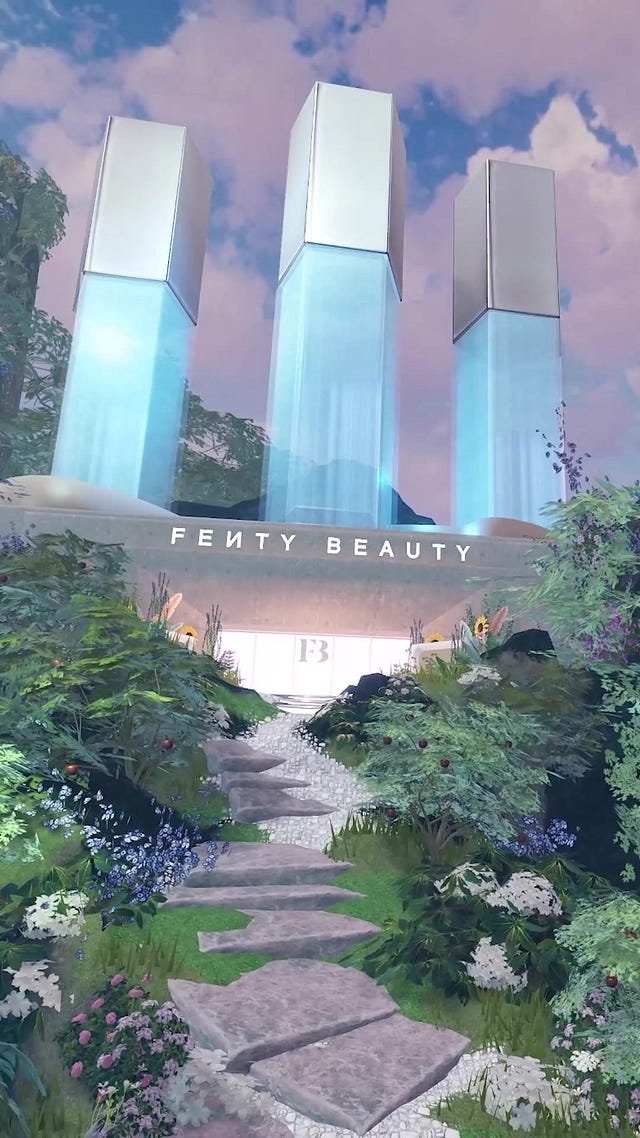
 Tiktok failed to load.
Tiktok failed to load.Enable 3rd party cookies or use another browser
Or consider athletic apparel brand Alo Yoga, which recently connected its Roblox wellness sanctuary to the real world. On the platform, players can enjoy virtual sound baths, yoga classes, guided meditations, and storefronts. And, in all of Alo’s 150 physical stores, players can scan in-store decals to unlock exclusive digital items inside Roblox. The connection works both ways: the in-store experience becomes more valuable because of what it lets players access online, while the digital experience gains meaning through physical touch points — a constant loop that makes both worlds feel more valuable.
Then there’s IKEA, whose Roblox presence might be the most forward-thinking of them all. Last summer, the affordable furniture giant opened a virtual store inside Roblox — and with it, ten real paid jobs. Players who applied and were selected were paid £13.15 an hour to log into Roblox and, using their avatars, work virtual shifts inside IKEA’s digital store, helping other users shop for virtual furniture and (of course) serving up pixelated meatballs. In an online press release, IKEA described the experience as an example of how they do careers differently, saying, “Our co-workers are able to change roles, switch departments, and grow in any direction they choose, both in the game or in the real world.” That last line is key: these jobs were not only digital simulations of IKEA careers but also gamified auditions for careers in real life.
While, initially, these experiences might appear disconnected (lip gloss and furniture aren’t exactly in the same product category), Fenty, Alo, and IKEA’s Roblox presences signal a fundamental shift in how successful brands are thinking about community building. They’ve collapsed the URL/IRL divide, creating spaces where anyone with a screen can enter and where the most coveted experiences are earned through engagement rather than purchased through privilege.
The So What
And that's what makes the current fixation on IRL feel a little simplistic, if not shortsighted. While physical experiences appear more "authentic" on Instagram or generate better FOMO-inducing recaps on TikTok, IRL isn’t inherently synonymous with community that scales. It’s simply another platform for engagement — and one with real limitations.
Roblox is the inverse. It gives users access (anyone with a screen can enter), then overdelivers by offering exclusive experiences without the barriers of money, geography, or status. In a time when people are craving connection, that kind of access — expansive, participatory, and creatively rich — might matter more than proximity.
Perhaps that's our real blind spot: we think of digital spaces as simulations of life, rather than extensions of it. And don’t get me wrong — I enjoy (and even prefer) real-life experiences. But there’s no denying that Roblox is offering something traditional platforms haven’t. It’s where digital participation becomes the currency for physical rewards, where online engagement translates to offline status, and where virtual communities unlock real-world experiences. It offers agency, status, creativity, community, and commerce, paving new pathways to exclusivity that are paradoxically more accessible than many IRL experiences.
Which leads me to think that the next big cultural moment may not happen in a wellness club or sold-out stadium. It may unfold in a virtual world where digital participation has become the most democratic path to community — a world many of us still haven't logged onto.
✉️ If you haven’t yet subscribed, click the link below so you don’t miss a thing.



